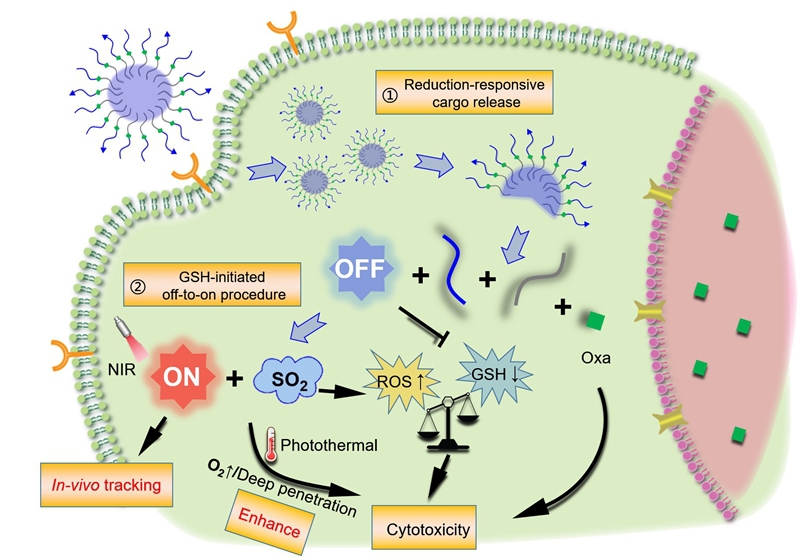
25% of colorectal cancer patients will experience peritoneal metastases (CCPM) due to its natural of serosa infiltration, with a 5-year survival rate less than 10% in clinic. CCPM, which is multiple and scattered, is the terminal stage of colorectal cancer, and the therapy is extremely difficult. CCPM are normally poorly vascularized, resulting a weak response to systemically-administered chemotherapy. The gold standard treatment is hyperthermic intraperitoneal chemotherapy (HIPEC), which indicates a continuous perfused intraperitoneal circulation of heated chemotherapy fluid for 30~90 min post the invasive fistulation. However, HIPEC requires complicated surgeries and sophisticated instruments. Patients receiving HIPEC often suffer from digestive fistula and peritonitis.
In this work, a versatile tumor-targeting stimuli-responsive theranostic platform for peritoneal metastases of colorectal cancer is proposed for tumor tracking and photothermal-enhanced chemotherapy. A quenched photosensitizer (“off” state) is developed and escorted into a tumor-targeting oxaliplatin-embedded micelle. Once reaching the tumor cell, the micelle is clasped to release free oxaliplatin, as well as the “off” photosensitizer, which is further activated (“turned-on”) in the tumor reducing microenvironment to provide optical imaging and photothermal effect. The combined results from hyperthermia-enhanced chemotherapy, deep penetration, perfused O2, and the leveraged GSH-ROS imbalance in tumor cells are achieved for improved antitumor efficacy and reduced systematic toxicity.

Scheme 1. Illustration of the proposed strategy using a versatile theranostic platform for colorectal peritoneal metastases for tumor tracking and photothermal-enhanced chemotherapy.
This work was recently published on Advanced Science, with a title of “A Versatile Theranostic Platform for Colorectal Cancer Peritoneal Metastases:Real-Time Tumor-Tracking and Photothermal-Enhanced Chemotherapy”. The first author is Assoc Prof Tao Sun and the corresponding author is Prof Chen Jiang. The work was supported by National Natural Science
Foundation of China (92059110/81872808), Development Fund for Shanghai Talents (2020090) and other projects.
The paper can be found via https://onlinelibrary.wiley.com/doi/10.1002/advs.202102256.